The salty spray kicked up against the wooden hull as the Roman warship closed in on its Carthaginian prey. The enemy vessel, sleek and manned by experienced sailors, had executed a perfect ramming approach countless times before. But on this day in 260 BCE, the Carthaginian captain saw something unusual protruding from the Roman ship’s bow—a strange wooden contraption that would forever change the course of naval warfare and, ultimately, the fate of the ancient world.
This device—the corvus—would transform Rome from a fumbling maritime novice into the Mediterranean’s dominant naval power. Yet remarkably, this revolutionary technology has remained largely overlooked in popular history, overshadowed by Rome’s legendary legions and architectural achievements.”It’s one of history’s most perfect examples of asymmetric warfare,” explains Dr. Maria Gonzalez, maritime archaeologist at the University of Barcelona.
“The Romans recognized they couldn’t beat the Carthaginians at their own game, so they changed the rules entirely.”Recent archaeological discoveries have brought new attention to this ingenious device that allowed Rome to bridge the gap—quite literally—between their land warfare expertise and their maritime inexperience. The implications of this innovation extend far beyond ancient history, offering powerful insights for modern business leaders about disruption, adaptation, and the transformative power of seemingly simple ideas.
How a Land Power Faced an Impossible Naval ChallengeBefore the corvus, Rome’s situation appeared hopeless at sea.
The First Punic War (264-241 BCE) pitted the Romans against Carthage, a maritime empire whose naval tradition stretched back centuries. Carthaginian sailors had practically been born on ships; their vessels were faster, more maneuverable, and commanded by captains with generations of naval combat experience.
The Romans, by contrast, were predominantly a land power. Their military doctrine centered around disciplined infantry formations and close-quarters combat—tactics that proved useless on the rolling deck of a warship. Early naval engagements were embarrassingly one-sided, with Roman ships outmaneuvered and rammed into splinters by the superior Carthaginian fleet.
“The maritime disparity between Rome and Carthage cannot be overstated,” notes Professor Thomas Jenkins, author of “Mediterranean Naval Warfare in Antiquity.”
“Imagine a child’s first swimming lesson against an Olympic champion. Rome was not merely disadvantaged—they were completely out of their element.
“Contemporary accounts suggest that early Roman sailors could barely navigate their vessels, let alone execute complex battle maneuvers. The historian Polybius records that Romans practiced rowing while their ships remained on land—a telling indication of their maritime inexperience. Some ancient sources even claim that many Roman sailors didn’t know how to swim, though modern historians debate this point.This deficiency posed an existential threat to Roman ambitions.
Control of the Mediterranean—what Romans would later call “Mare Nostrum” (Our Sea)—was essential for projecting power, securing trade routes, and supplying armies. Without naval capability, Rome’s expansion would be forever constrained by the shoreline.The strategic situation seemed insurmountable. Rome could spend decades developing naval expertise to match Carthage—time they didn’t have—or somehow find a way to neutralize Carthage’s advantage immediately. What followed was one of history’s most brilliant examples of lateral thinking.
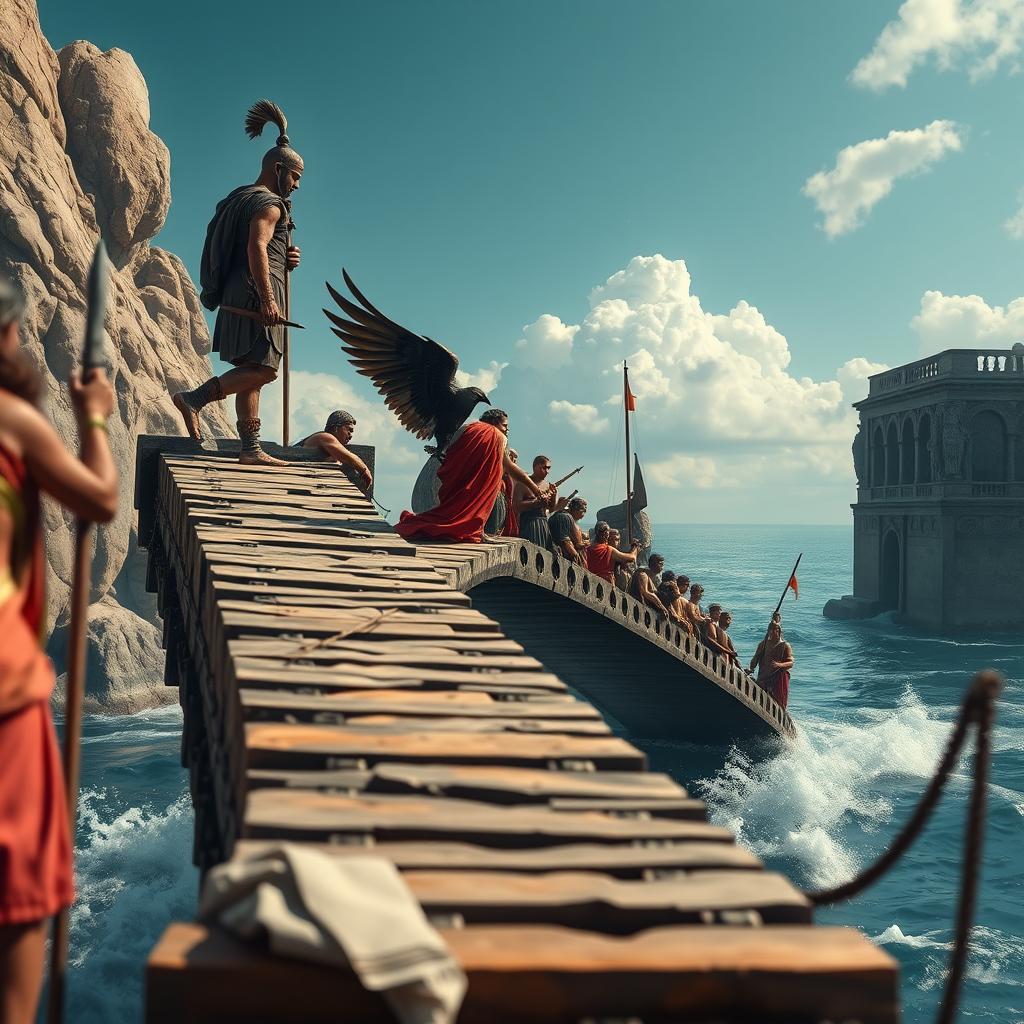
The Ingenious Solution: Turning Ships Into BridgesThe Romans’ breakthrough came from a fundamental reframing of the problem.
If they couldn’t beat the Carthaginians in naval warfare, they would transform naval battles into something they could dominate: land combat.Enter the corvus (Latin for “raven”), a simple yet revolutionary boarding device. The mechanism consisted of a 36-foot wooden bridge, approximately 4 feet wide, with a heavy spike (resembling a raven’s beak) on its underside.
The bridge was mounted on a swivel at the bow of Roman ships and controlled by a pulley system. When enemy vessels came within range, Romans would drop the corvus onto the opposing deck, where the spike would embed itself, locking the ships together.What happened next completely upended traditional naval tactics. With the ships firmly connected, the battle transformed from a naval engagement into an infantry assault—precisely the type of combat where Roman legionaries excelled. Heavily armed Roman soldiers could now pour across the bridge onto enemy decks, overwhelming the lightly armored Carthaginian sailors.
“The psychological impact must have been devastating,” says Dr. Elena Martini, specialist in ancient military technology at Oxford University. “Imagine Carthaginian sailors’ horror when, instead of executing their practiced ramming maneuvers, they suddenly found themselves face-to-face with Rome’s elite infantry in close quarters.
“Archaeological evidence supports this psychological advantage. A 2018 underwater excavation near Sicily uncovered Carthaginian ship remains with distinctive damage patterns consistent with corvus use. Fascinatingly, researchers found clusters of discarded weapons on the seabed—suggesting Carthaginian sailors may have thrown down their arms in panic when faced with boarding Roman legionaries.
Recent metallurgical analysis of the spike mechanism, conducted on fragments recovered from the Mediterranean seabed, reveals another dimension of Roman ingenuity. The spike was crafted from an iron-copper alloy specifically designed to penetrate wooden decks without shattering—evidence of sophisticated engineering beyond what many historians previously attributed to Roman naval architects.
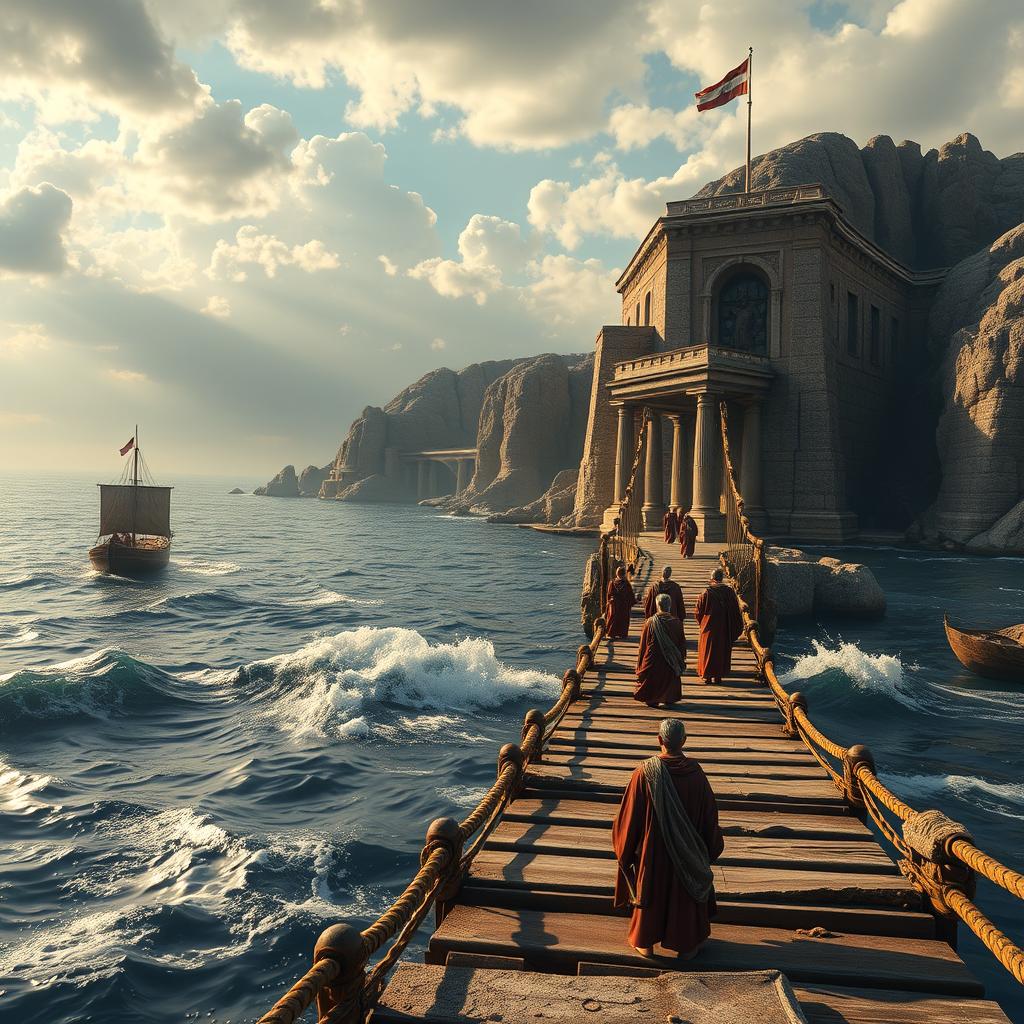
The Battle That Changed Everything: Mylae’s Turning PointThe corvus made its combat debut at the Battle of Mylae in 260 BCE, under the command of Consul Gaius Duilius.
The Carthaginians, unaware of the Romans’ new technology, approached with confidence, expecting another easy victory against the maritime amateurs. What followed instead was a decisive Roman triumph that shocked the ancient world.As Carthaginian ships closed in for their traditional ramming maneuvers, Roman vessels dropped their corvi, instantly transforming the engagement.
One by one, Carthaginian ships found themselves locked together with Roman vessels, their skilled crews helpless against the onslaught of Roman infantry. By day’s end, Rome had captured or destroyed nearly 50 enemy ships while losing none of their own.The Romans’ innovative solution had nullified generations of Carthaginian naval expertise in a single afternoon.
Dr. Anthony Richards, military historian at Princeton University, puts it succinctly: “At Mylae, Rome didn’t just win a battle—they rendered an entire fighting doctrine obsolete.”The Romans themselves recognized the magnitude of this achievement. Duilius was honored with Rome’s first naval triumph—a ceremonial procession traditionally reserved for land victories.
A commemorative column, the Columna Rostrata, was erected in the Roman Forum, adorned with the bronze rams (rostra) of captured Carthaginian ships. Fragments of this monument, discovered during 19th-century excavations, contain inscriptions specifically praising the corvus innovation.More significant than the battle itself was how it transformed Roman strategic thinking. Almost overnight, Rome shifted from defensive naval posture to aggressive maritime expansion. Within three years of adopting the corvus, Rome had built a fleet of over 330 warships—an astonishing industrial achievement that demonstrates how thoroughly the success at Mylae had convinced Roman leadership to invest in naval power.
Engineering Details: How Did the Corvus Actually Work?
Recent archaeological discoveries have provided unprecedented insights into the corvus’s mechanical design. In 2020, marine archaeologists working off Sicily’s eastern coast recovered wooden fragments that analysis confirmed came from a corvus mechanism. These findings, combined with contemporary descriptions, allow for a more detailed understanding of this device than ever before.
The corvus consisted of three main components:First, a vertical wooden pole, approximately 24 feet tall, was secured near the bow of the ship. This served as the mounting point and allowed the bridge to be raised or lowered.
Second, the bridge itself measured roughly 36 feet long and 4 feet wide—dimensions that allowed several soldiers to cross simultaneously while maintaining stability. The walkway featured raised sides to prevent troops from slipping off during rough seas.
Third, the distinctive spike mechanism at the end was an iron-tipped penetrator designed to embed itself firmly in enemy decks. Analysis of recovered fragments shows sophisticated metallurgy that created a hardened point capable of piercing ship timber without breaking.
The entire mechanism was controlled through an ingenious pulley system that allowed the bridge to be raised, rotated, and dropped quickly—critical for capturing fast-moving targets. Modern reconstructions suggest that a skilled crew could deploy the corvus in under 30 seconds.
“What’s remarkable isn’t just the concept, but the engineering precision,” explains Dr. Hiroshi Tanaka, naval engineering historian. “The corvus had to be light enough to be manipulated quickly yet strong enough to support fully armored soldiers. It needed to secure ships firmly together without compromising the structural integrity of the Roman vessel. The balance they achieved shows sophisticated understanding of materials and stress factors.
“This engineering achievement becomes even more impressive considering Rome had minimal shipbuilding tradition before the First Punic War. Most likely, the corvus was designed by military engineers who adapted land-based siege technology for maritime use—a brilliant example of cross-disciplinary innovation.
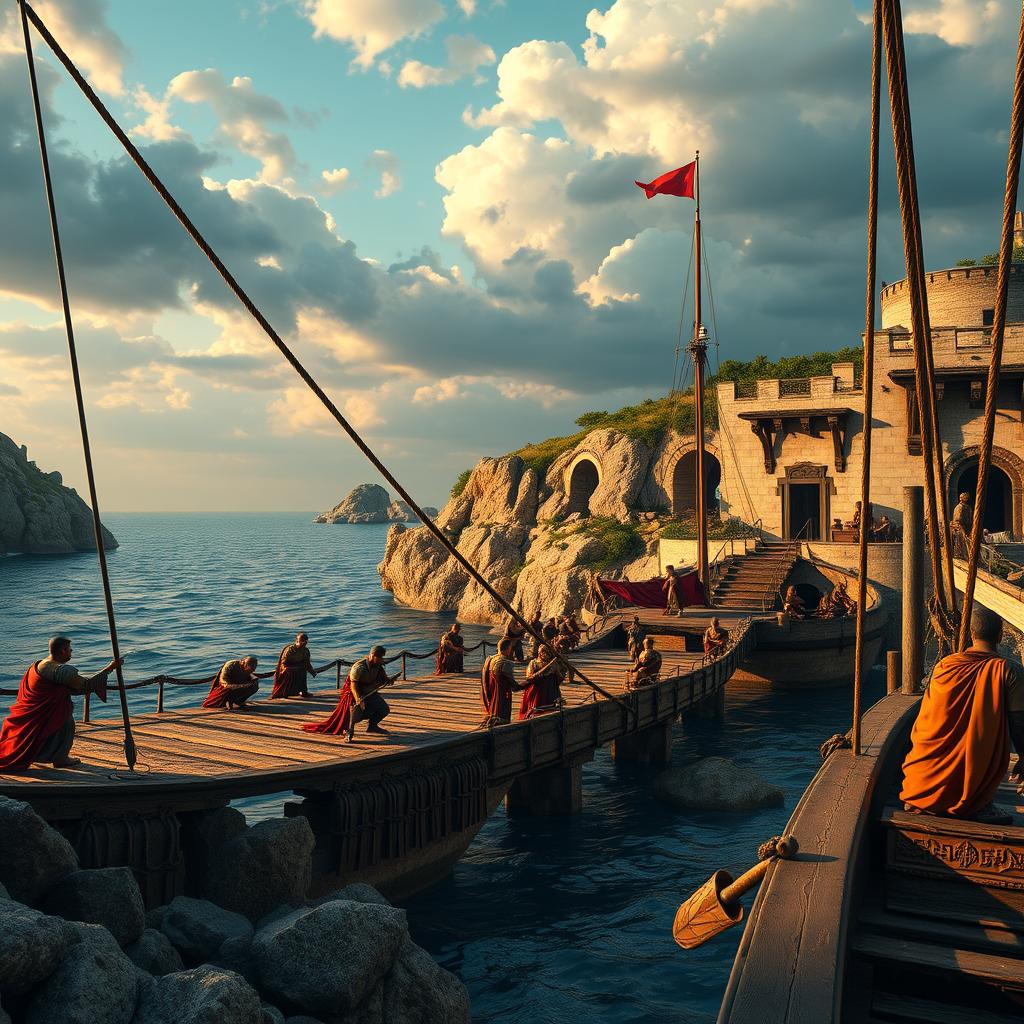
The Price of Innovation: Unintended ConsequencesDespite its tactical brilliance, the corvus wasn’t without drawbacks.
The heavy apparatus mounted high on a ship’s bow created stability issues, especially in rough seas. Historical records indicate that Rome lost several fleets to storms during the First Punic War—disasters potentially exacerbated by the top-heavy corvus design.
“Innovation often comes with unintended consequences,” observes Professor Jenkins. “The same device that made Roman ships lethal in battle may have made them vulnerable to Neptune’s wrath.
“This vulnerability culminated in 255 BCE when a massive storm destroyed over 280 Roman ships off Sicily, drowning as many as 100,000 men. While ancient sources don’t explicitly blame the corvus, modern naval architects who’ve studied reconstructions suggest the device would have significantly compromised seaworthiness in high winds and heavy seas.
This reveals an important aspect of innovation often overlooked: the trade-offs inherent in disruptive solutions. The Romans accepted increased weather vulnerability in exchange for tactical superiority—a calculated risk that ultimately proved worthwhile despite the losses.Interestingly, archaeological evidence suggests the Romans themselves recognized this drawback and iterated on the design. Later versions of the corvus were lighter and included quick-release mechanisms that allowed the device to be jettisoned in deteriorating weather conditions—an early example of adaptive product development.

Beyond the Battlefield: How the Corvus Transformed an EmpireThe corvus’s impact extended far beyond military tactics.
It fundamentally altered Rome’s strategic position and self-perception, transforming a regional Italian power into a Mediterranean empire.Prior to the corvus, Rome’s expansion had been limited to the Italian peninsula. Naval inferiority created a natural boundary to Roman ambition. After mastering the seas, however, no shore was beyond Rome’s reach. Within a generation, Roman influence extended to North Africa, Spain, Greece, and Asia Minor.
“The corvus didn’t just change how Rome fought—it changed how Rome saw itself,” explains Dr. Gonzalez. “They shifted from thinking of themselves as rulers of Italy to potential masters of the entire Mediterranean world.
“This expanded self-concept manifested in Roman culture and governance. Maritime imagery began appearing prominently in Roman art and architecture. Trade networks expanded dramatically as sea lanes became secure. Perhaps most significantly, Rome developed new political and administrative systems specifically designed to govern overseas territories—the provincial system that would eventually administer the vast Roman Empire.
The corvus also transformed Rome’s relationship with technology and innovation. Success in naval warfare encouraged experimentation in other domains, contributing to Rome’s renowned pragmatic approach to engineering problems. The willingness to adopt and adapt foreign technologies became a hallmark of Roman expansion.
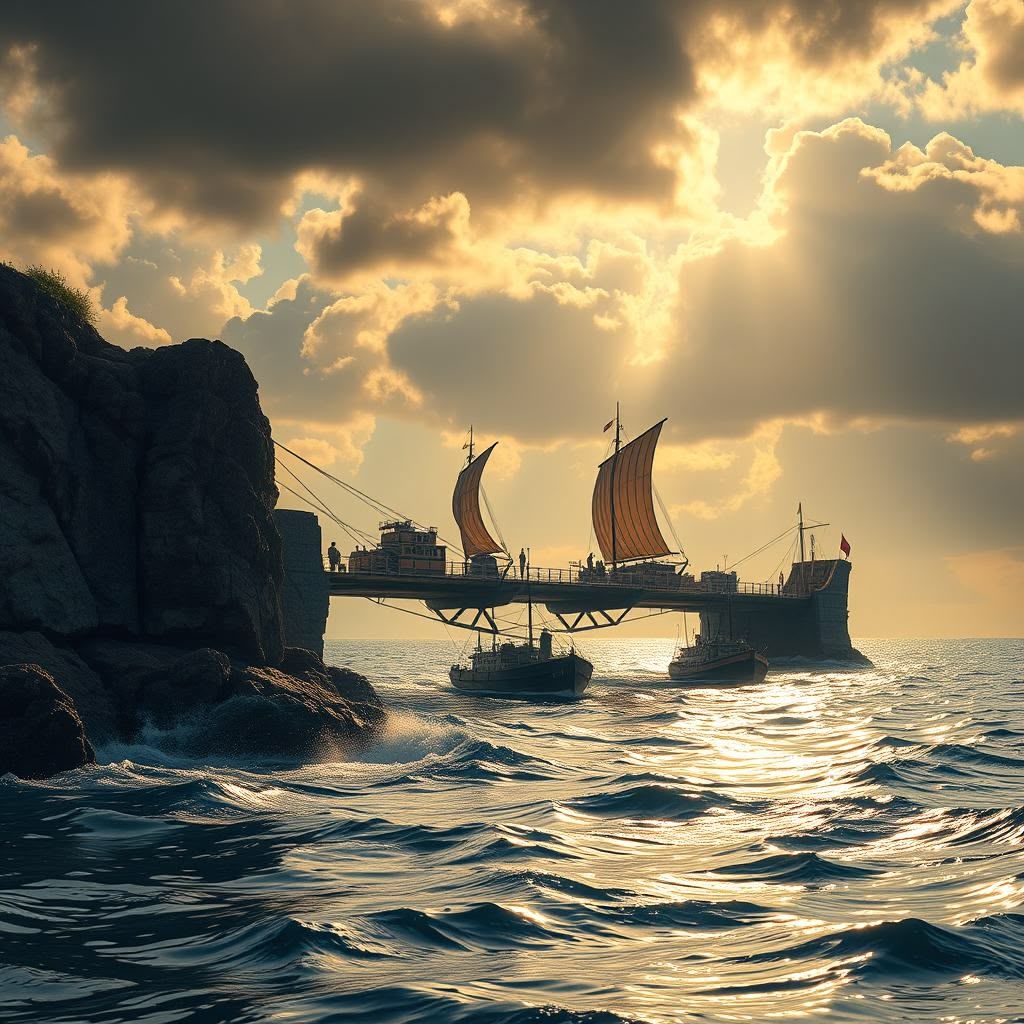
Modern Parallels: Business Lessons from Ancient InnovationThe corvus story offers striking parallels to modern business disruption.
Like Rome, today’s companies often face competitors with seemingly insurmountable advantages in experience or resources. The corvus strategy—changing the nature of competition rather than competing on established terms—provides a powerful template for modern innovation.
Consider how Netflix transformed entertainment by changing the competition from retail distribution to streaming technology, or how Apple’s iPhone redefined mobile phones by making computing capability, not call quality, the primary battlefield. These modern examples follow the corvus principle: if you can’t win at their game, change the game entirely.”The corvus principle is exactly what we look for in disruptive startups,” says venture capitalist Maria Chen of Horizon Partners. “When I evaluate potential investments, I’m not interested in companies doing the same thing slightly better—I want firms that fundamentally reframe the competitive landscape, just as Rome did.
“The corvus also demonstrates how constraints can drive innovation. Rome’s lack of naval tradition, initially a weakness, forced them to think creatively rather than incrementally improve existing approaches. Similarly, resource constraints often push startups to develop breakthrough solutions that established competitors overlook.
Perhaps most relevant is how the corvus illustrates the power of leveraging existing strengths in new contexts. Rome didn’t develop entirely new capabilities; they found a way to deploy their infantry excellence in naval warfare. Modern businesses can similarly examine their core competencies for applications in adjacent markets or challenges.
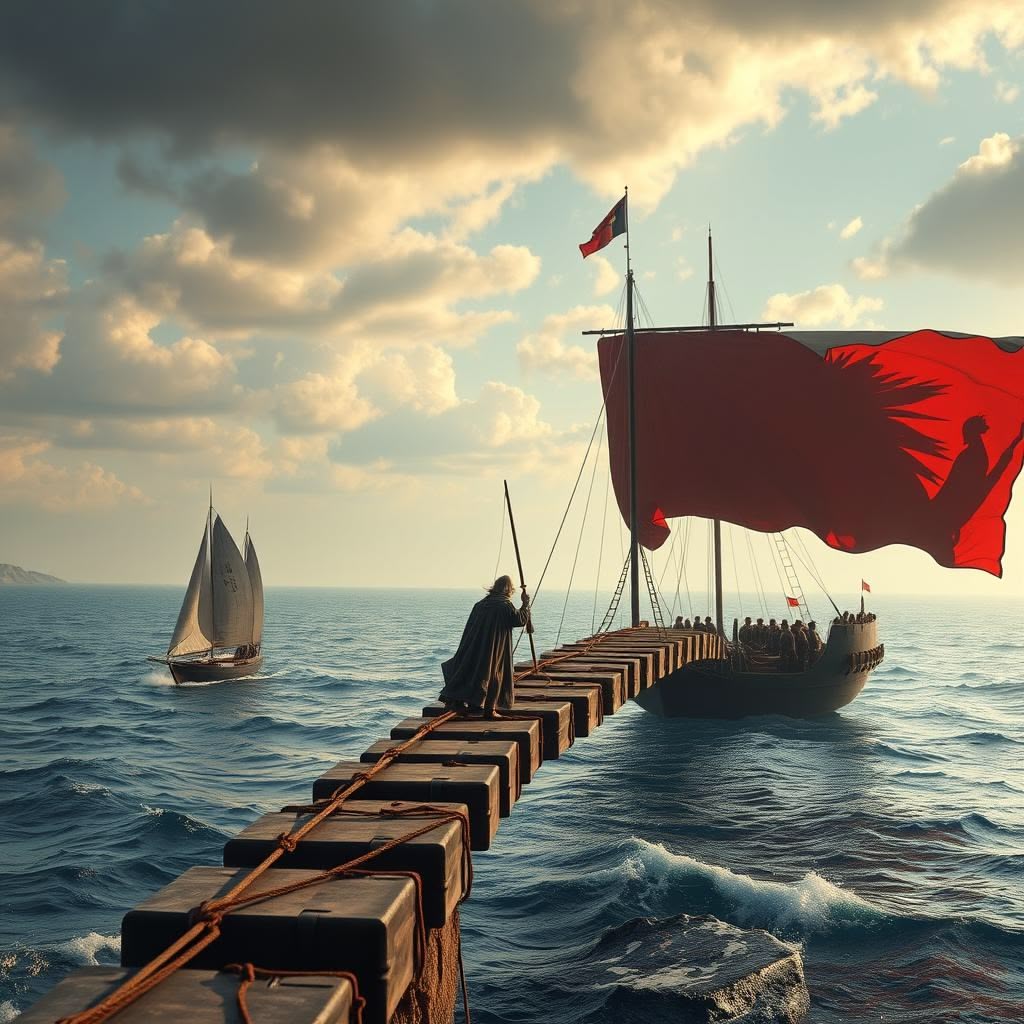
Archaeological Revelations: New Discoveries Changing Our UnderstandingRecent archaeological work has substantially enriched our understanding of the corvus.
A 2019 excavation near Lilybaeum (modern Marsala, Sicily) uncovered remarkably preserved ship remnants with distinctive hardware that experts believe once supported a corvus mechanism. Carbon dating confirms these remains align precisely with the First Punic War period.
Even more revealing was a 2021 discovery by marine archaeologists working off the coast of Drepana (modern Trapani). Using advanced sonar technology, they identified a debris field containing dozens of artifacts from a naval engagement, including what appears to be a partially intact corvus spike mechanism.
“What’s particularly exciting about the Drepana findings is that they’ve allowed us to analyze the metallurgical composition of the corvus spike,” explains Dr. Sophia Nikolaidis, who led the excavation team. “The sophisticated alloy suggests more advanced engineering than previously attributed to third-century BCE Romans.
“These discoveries have prompted historians to reconsider the traditional narrative that portrays the corvus as a crude, improvised solution. The archaeological evidence instead suggests a sophisticated device that underwent continuous refinement—perhaps explaining its sustained effectiveness throughout the war.
Isotope analysis of recovered wood fragments has even provided insight into the corvus’s supply chain. The pine used in construction came predominantly from forests in southern Italy, indicating a deliberate sourcing strategy that mobilized Roman Italy’s resources for this crucial innovation.## Legacy of Innovation: How the Corvus Echo Reaches Today Though the corvus eventually faded from use as Roman naval expertise grew, its legacy endured in multiple forms. The concept of naval boarding actions remained central to Mediterranean warfare for centuries. Even as late as the 16th century, Spanish galleons employed similar boarding tactics against Ottoman vessels—a direct lineage from Roman innovation.More broadly, the corvus exemplifies how asymmetric advantages can be created through lateral thinking—a principle that remains relevant in military, business, and technological contexts today. When facing superior competition, changing the nature of the contest often proves more effective than trying to overcome advantages within the established paradigm.
“What makes the corvus so instructive is how it reminds us that innovation often comes not from doing something better, but from doing something different,” observes business strategist Robert Keller. “The Romans didn’t build better ships or train better sailors—they recognized that wasn’t the path to victory.
“For modern leaders facing disruptive challenges, the corvus offers three enduring lessons:First, leverage existing strengths rather than attempting to develop entirely new capabilities. Rome succeeded by bringing their infantry expertise to naval warfare, not by becoming better sailors than the Carthaginians.
Second, accept calculated trade-offs. The corvus created vulnerability in storms, but the strategic advantage outweighed this risk. Similarly, modern innovations often involve accepting certain disadvantages to secure transformative benefits.
Third, recognize that institutional inexperience can be an asset rather than a liability. Rome’s lack of naval tradition freed them from conventional thinking about maritime warfare, allowing for radical innovation. Similarly, industry outsiders often drive disruption precisely because they aren’t constrained by established practices.
The corvus reminds us that history’s most significant innovations rarely emerge from incremental improvements. Instead, they come from fundamentally reframing challenges and leveraging existing strengths in unexpected ways. Whether in ancient warfare or modern enterprise, the path to overcoming seemingly insurmountable disadvantages often lies not in playing the game better, but in changing the game entirely.
As we face today’s complex challenges, the ancient Romans’ ingenuity offers a timeless template for transformation: find your strengths, change the battlefield, and turn disadvantage into opportunity. The corvus may be ancient history, but its lesson in strategic innovation remains as relevant as ever.

